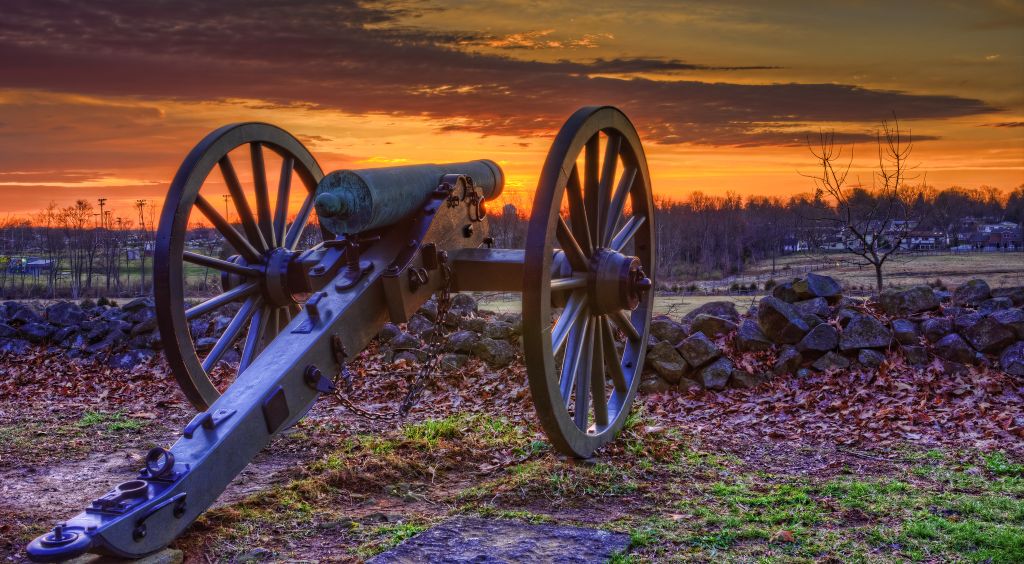Authors:
Historic Era: Era 5: Civil War and Reconstruction (1850-1877)
Historic Theme:
Subject:
December 1954 | Volume 6, Issue 1


Authors:
Historic Era: Era 5: Civil War and Reconstruction (1850-1877)
Historic Theme:
Subject:
December 1954 | Volume 6, Issue 1

The sun goes down every evening over the muzzle of a gun that has been a museum piece for nearly a century, and where there was a battlefield there is now a park, with green fields rolling west under the sunset haze to the misty blue mountain wall. You can see it all just about as it used to be, and to look at it brings up deep moods and sacred memories that are part of our American heritage.
Yet the moods and the memories are not quite enough, for Gettysburg battlefield — like any other historic site — is memorable not for its scenic and evocative qualities but because it symbolizes the struggles and the sacrifices and the terrible hopes of people in a great moment of crisis. The men who fought at Gettysburg are all gone now but once they were very much alive, contending desperately with a fate which was almost more than they could cope with; and as Mr. Lincoln remarked, the world can never forget what they did there.
It is precisely that question — What did men do there? — that animates every worthwhile examination of the American past.
For history after all is the story of people: a statement that might seem too obvious to be worth making if it were not for the fact that history so often is presented in terms of vast incomprehensible forces moving far under the surface, carrying human beings along, helpless, and making them conform to a pattern whose true shape they never see. The pattern does exist, often enough, and it is important to trace it. Yet it is good to remember that it is the people who make the pattern, and not the other way around.
The editors of any magazine calling itself AMERICAN HERITAGE must begin by stating the faith that moves them; and the faith that moves us is, quite simply, the belief that our heritage is best understood by a study of the things that the ordinary folk of America have done and thought and dreamed since first they began to live here. They have done and thought and dreamed some rather extraordinary things, as a matter of fact, whose true significance does not always appear on the surface.
For a great many of the things people do seem rather unimportant, at first glance. They sing tinkly little songs, or they give way to queer enthusiasms about race horses or steamboats or carved figureheads for sailing ships; they fall victim to fear and suspicion, and so work hardship on some of their fellows who are doing the best they can according to the lights that were given them; they paint pictures of Indians, or of fire